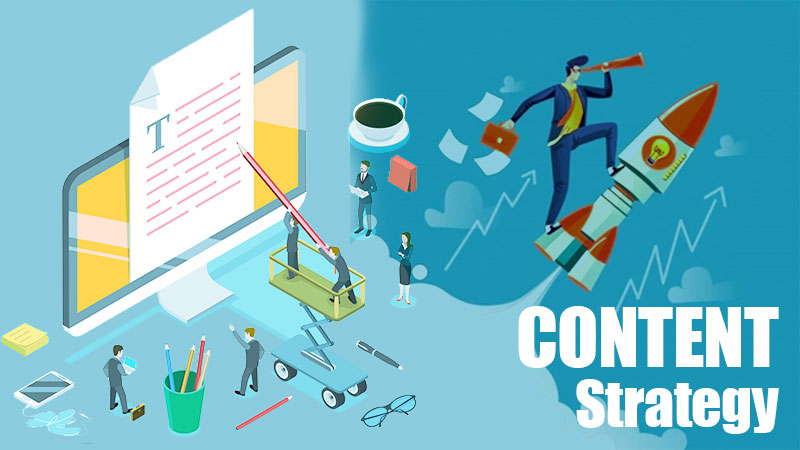Investing in your content strategy is a wise business decision, especially for a rehabilitation center. Not only does content output broaden visibility and increase rankings, it also allows for a business to personally connect with their audience. For a recovery center, establishing a connection is everything.
Unsurprisingly, empathic marketing has shown to improve satisfaction. People want to connect to brands and service providers that care about them beyond the “sale”. So, how can you be there to help those dealing with a substance use disorder? And, how can they find your unique business in the sea of other recovery providers? With a smart content strategy plan.
You will first need to understand your own brand. For example, you will need to determine a vision and mission, core values, and “buyer persona” (desired client). Once you have a cohesive brand identity, you can set content goals such as getting more website visitors per month, increasing followers on a social platform, or getting a certain percentage of consultation sign-ups. Whatever the goal may be, you’ll need to be relatable in your content to reach prospects.
Showcasing your expertise through content is a good move. Whether you focus on alternative therapies for addiction treatment, a 12-step program for mothers, or psychodynamic therapy for co-occurring disorders, concentrating on your niche will help you develop an online community and bring in the best suited clients that share your values.
Although it benefits you to focus on a strength of your business, the types of content should be versatile.
Type of Content:
- Blog: Getting into a habit of publishing weekly articles, that can be shared on social media or found through search engines, is a good practice. Consider writing about your services, the latest industry news, company updates, and information on addiction and mental health. You can also have staff thought pieces, client testimonials, and guest writers in your blog. The articles should be digestible for the reader, too. A way to make pieces friendlier is by adding photos or infographics, including subheadings, using bullet points, and summarizing through a video. Additionally, list posts and how-to posts are easy to read and have the potential to go viral.
- Videos: Many prefer to watch a video than to read text about a service. You can produce tutorials, information videos, testimonials, and a look into the treatment program so that viewers have a better understanding of who you are and what you offer. Post the video content on blog articles, your website and social networking sites.
- Ebooks: An ebook can help you obtain leads as they are meant to offer exclusive information and solutions. You can focus the ebook on your specialty, addressing the problems as to why your service needs to exist and the solution that ties into your services. It’s best to make the topic evergreen so that it can be downloaded at any time. Promote the ebook on your website or as an advertisement.
- Infographics: A visually-appealing, and equally informative, infographic can help spread brand awareness as it can be shared on social platforms such as Facebook, Instagram, Pinterest, Twitter, and Tumblr. Infographics can also be shared through text and messaging apps.
- Email Newsletter: Weekly or monthly newsletters keep you fresh on people’s mind. To receive a newsletter from a company, a person must subscribe using their email address. In your case, that means a previous client, prospective client, or person who is trying to help a loved one took the first step in confronting a disorder. A newsletter allows for you to help clients with their aftercare and to help people who haven’t quite yet made their way to recovery. You can share coping techniques, health tips, tutorials, success stories, and company news to stay connected. Additionally, emails can be forwarded giving you the opportunity to reach others.
With some trial and error, you’ll find the best combination of content that works for your recovery center. To note, SEO is essential for your business to thrive. 90% of people only look at the first page of search results. If your content isn’t optimized, it’ll most likely exist in the dark corners of the Internet. Make sure to integrate SEO tips into your content strategy, as well as a call-to-action so that future clients can find you.
To see why content matters, here are a few numbers to consider:
- A business with a blog can have 55% more visitors
- 61% of purchases result from reading a blog
- 72% of marketers believe content marketing is their most effective SEO strategy
- 57% of marketers have gained clients/customers through their blog
- 92% of marketers see content as an asset to their business
- 70% of marketers prioritize quality content over quantity of content
- 51% of content consumption is a result of organic searches
- 77% Internet users read blogs
- Infographics are the most shared type of content
- 3000+ word blogs are most shared blogs
- Blog articles that have images get 94% more views that those that don’t
- Using photos with real people, rather than stock images, can increase conversions by 35%
If you’re ready to up your content strategy and online reputation strategy, contact Reputation Rehab at (855) 519-0120.

